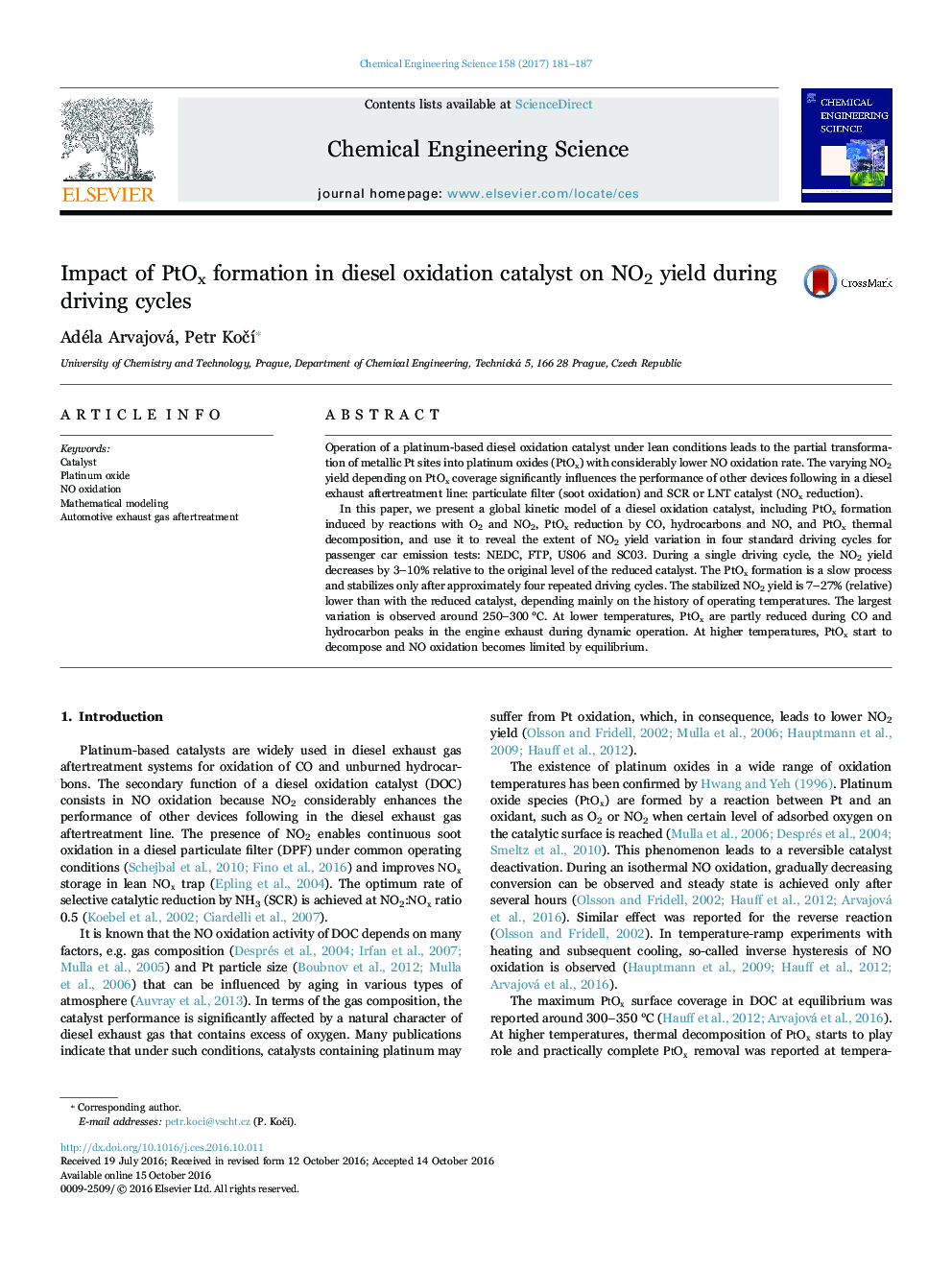| کد مقاله | کد نشریه | سال انتشار | مقاله انگلیسی | نسخه تمام متن |
|---|---|---|---|---|
| 6467918 | 1423261 | 2017 | 7 صفحه PDF | دانلود رایگان |

- Pt sites oxidation takes place in platinum-based diesel oxidation catalysts.
- NO oxidation rate gradually decreases with the growing PtOx coverage.
- NO2 formation was simulated over repeated driving cycles NEDC, FTP, SC03 and US06.
- NO2 yield decreases by 3-10% over one cycle compared to the reduced catalyst.
- Stabilized NO2 yield in driving cycles is 7-27% lower than with the reduced catalyst
Operation of a platinum-based diesel oxidation catalyst under lean conditions leads to the partial transformation of metallic Pt sites into platinum oxides (PtOx) with considerably lower NO oxidation rate. The varying NO2 yield depending on PtOx coverage significantly influences the performance of other devices following in a diesel exhaust aftertreatment line: particulate filter (soot oxidation) and SCR or LNT catalyst (NOx reduction).In this paper, we present a global kinetic model of a diesel oxidation catalyst, including PtOx formation induced by reactions with O2 and NO2, PtOx reduction by CO, hydrocarbons and NO, and PtOx thermal decomposition, and use it to reveal the extent of NO2 yield variation in four standard driving cycles for passenger car emission tests: NEDC, FTP, US06 and SC03. During a single driving cycle, the NO2 yield decreases by 3-10% relative to the original level of the reduced catalyst. The PtOx formation is a slow process and stabilizes only after approximately four repeated driving cycles. The stabilized NO2 yield is 7-27% (relative) lower than with the reduced catalyst, depending mainly on the history of operating temperatures. The largest variation is observed around 250-300 °C. At lower temperatures, PtOx are partly reduced during CO and hydrocarbon peaks in the engine exhaust during dynamic operation. At higher temperatures, PtOx start to decompose and NO oxidation becomes limited by equilibrium.
130
Journal: Chemical Engineering Science - Volume 158, 2 February 2017, Pages 181-187